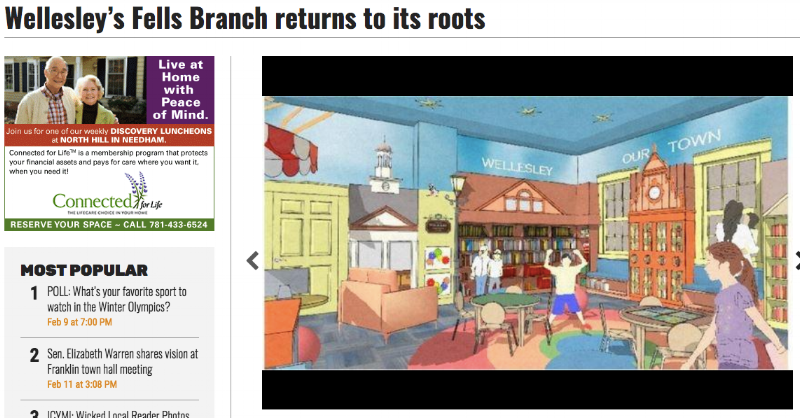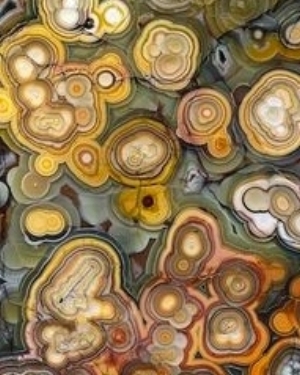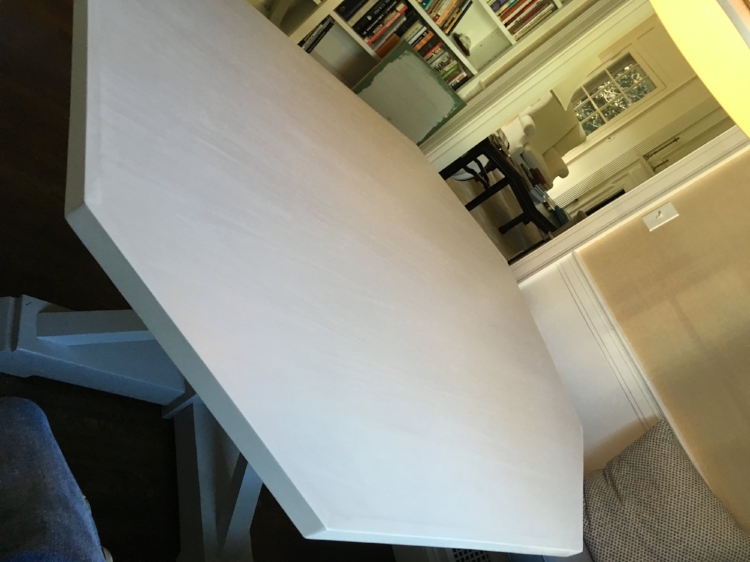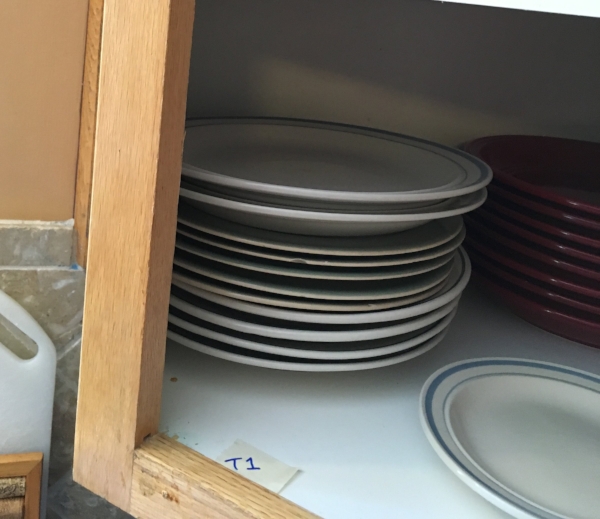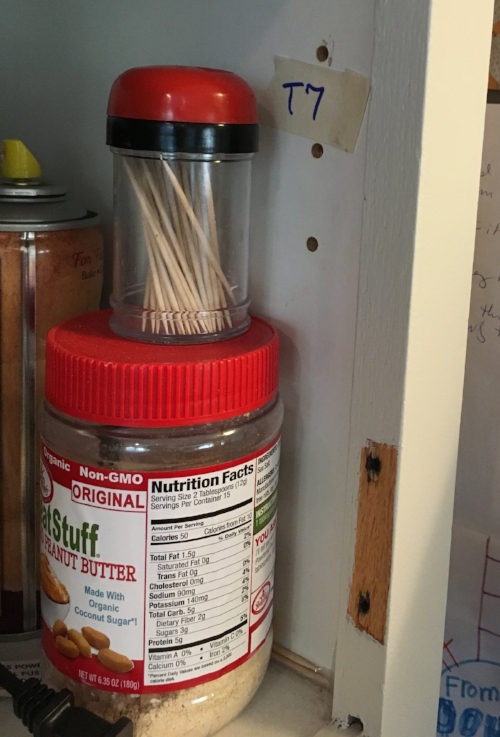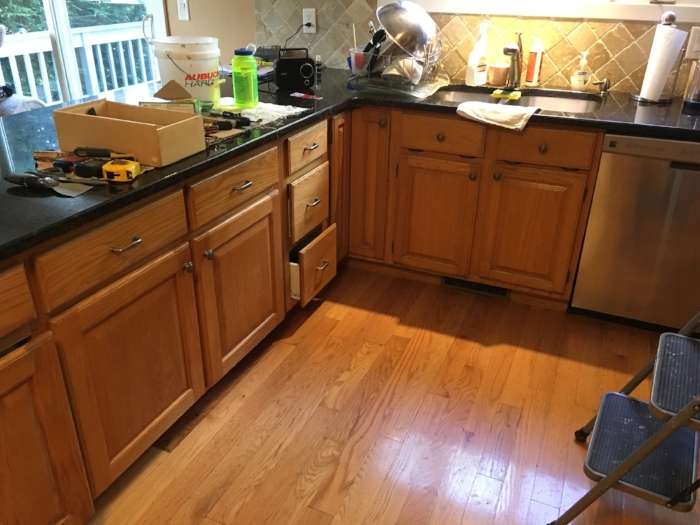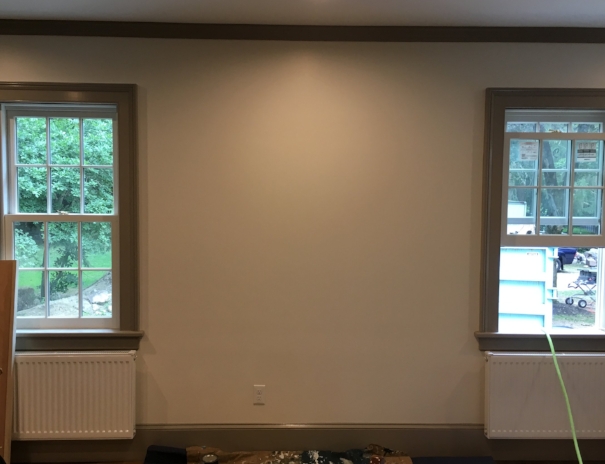4) As you take the hinges off the door, put tape on each one and mark it “T” for the top hinge and “B” for the bottom hinge. The hinges and ALL of your screws then go into a zip-top baggie labeled “T1” so you know which hinges and screws go with which doors. The handle/knob and associated screws for T1 also go into this same baggie.
5) Finally, label the cabinet door with “T1”. The best way to do this is to write it in sharpie on the inside of the door where the hinge gets mounted. That way, your writing gets covered up when you put the hinge back on (just make sure you don’t paint over it!).
Repeat this process for each door and drawer face. Each door and each drawer face gets its own code and baggie! The naming convention is not all that important -- as long as it makes sense to you and you don’t re-use any codes. I usually continue with “T2”, “T3”, etc on the top, then “B1”, “B2”, etc on the bottom and “D1”, “D2”, etc for drawer faces. I keep all of the baggies with screws, hinges and hardware together in one bucket and put that aside in a safe place.
OK – now you have a stack of doors, drawer faces and a bucket full of hardware-filled baggies. The next step takes you to PREPARATION – which starts with CLEANING. Yep – it is not glamorous, but it is absolutely essential. Paint does not stick to dirt or grease – so if you just paint over it, your paint will crack, peel or chip off. Adding to this, cabinets by nature have way more dirt and grease than normal painting projects – so don’t use any past success you may have had painting without cleaning as your guide! For this cleaning step, I use a heavy-duty degreaser called TSP – which is specially formulated to remove grease and dirt for painting. Because you want to paint a clean surface, I usually start with the frames and go right to the next step of sanding and priming – and THEN move on to cleaning the doors. When cleaning the doors, you will often need a scraper to take off heavy residue and/or old adhesive bumpers.
You are not done with PREPARATION yet! A clean surface is essential, but paint also does not stick to the shiny surfaces you will have on your original cabinets. To address this, the next step is sanding. I use 220 grit sandpaper on a sponge sanding block and start with the frames. Since you only need to dull the surfaces (not actually remove the finish), I hand-sand everything. You want to sand in the direction of the wood grain and make sure you hit all surfaces. You can check your work by looking at your surfaces at an angle in the light – this will show you what is still shiny, and what is now nice and dull for painting.
Ready for paint?! Not yet!! There is still more to the PROCESS. Now you have dust from sanding all over your project – so you will need to vacuum it off with a brush attachment and make sure your surface is dust-free.
Now, we are on to the importance of the type of PRODUCTS you use --- starting with the right PRIMER. Primer covers any knots or blemishes in the wood, but more importantly, it acts as a bonding agent to make sure your paint gets good, hard adhesion for long life. You will want to use a bonding primer for this; my favorite is a product by INSL-X called STIX that you can pick up at any store that sells Benjamin Moore products. If you are painting your cabinets a medium or darker color, have your paint store tint the primer to get it as close as possible to the final paint color. The primer will never actually match the exact paint color – but the closer you get it, the better your paint will cover the primer (a dark color paint over white primer is a big challenge!). To apply the primer and paint, I use a 1.5” high-quality angled brush to cut in the edges, and then a mini roller with a mohair blend roller sleeve to get a nice smooth rolled finish on the flat surfaces. When applying primer, make sure you don’t let it drip or glop up anywhere – you want your surface to be as smooth as possible. Prime all surfaces you will want to paint (both sides of doors, faces and edges of frames). When priming the edges of frames, paint right up to your thin sharpie lines for the hinges so you know where to re-hang the hinges when you are done. Likewise, do not cover the code on your doors and drawers as you will need that to be readable when you reassemble!



